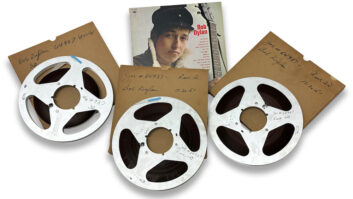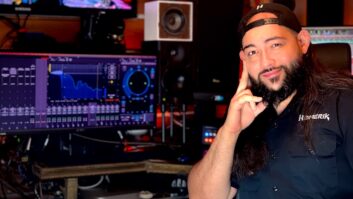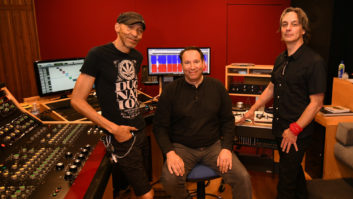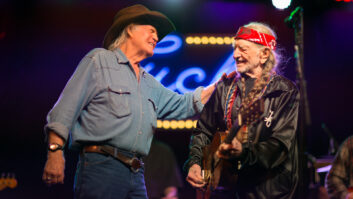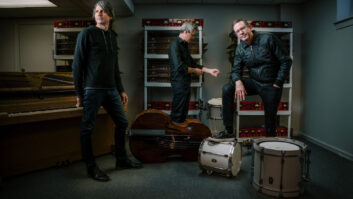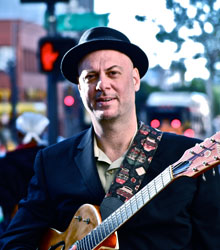
Drew Zingg
Guitarist Drew Zingg’s self-titled debut solo album is a revelation, and it was carefully designed to be one. It features the teamwork of Zingg with an elite rhythm section: Vinnie Colaiuta (drums), Will Lee (bass) and George Whitty (keyboards/arrangements). Together, and with guest vocalists and horn players, they blend seamlessly as a band to create 12 soulful and smoking tracks that span jazz, rock, funk, blues, pop and more.
For 30 years, Zingg has been known mainly within the circles of his notable employers (and dedicated fans who have seen him perform live), contributing to the music of artists such as Steely Dan, Michael McDonald, Boz Scaggs, Marcus Miller, Rickie Lee Jones, David Sanborn, Gladys Knight, Alana Davis, and Patti Austen.
Four years ago, Zingg had a conversation with a friend he’d known since their days at Vassar College in Poughkeepsie, N.Y., in the late 1970s, producer/engineer/composer George Walker Petit. “I said, ‘You’re one of the better guitar players I’ve ever heard. Why don’t you make a record?’” Petit recalls. “He said, ‘I wouldn’t know how to do that.’ I said, ‘I would, because I’ve either engineered or produced 100 records at this point.’ I was really motivated. I basically started this as a bit of a payback to Drew because he was such an influence on my music, and I figured he was one of these hitherto unknown, deserving artists who is a genius at what he does, and not enough people know about it.” To raise the needed funding, Petit first turned to mutual friends from Vassar. “Everyone signed on, from within a 5-minute conversation. So I formed an LLC, and we called ourselves the Infrangible Syndicate. We started fundraising all over the country.”
Zingg chose the musicians he wanted to record with, and Petit took on the roles of producer and engineer. Petit found a studio in Los Angeles via another friend from Vassar, producer/engineer Oliver Leiber (son of Jerry Leiber of Leiber & Stoller), who owns a private home studio, The Doguehouse. Petit booked four days at Leiber’s studio for tracking, assisted by Marc DeSisto and Mauricio Gargel. “We wanted pristine sounds, but we wanted it to sound natural,” Petit says. “The intention was to make the album sound like a bunch of friends in a great studio naturally playing together.”
“The entire thing was recorded in Pro Tools through [Leiber’s] Neve 8038 desk, or some API preamps,” Petit says. “The Doguehouse has one live room and two large iso booths. Vinnie’s drums [in the live room] were miked with Neumann, AKG, and Royer mics. I wanted a really acoustic drum sound—something that would breathe—so I also miked the room with a Neumann SM 2 [stereo mic]. I had two sets of overheads on the drums: a pair of Neumann K 84s, and I had a pair of beyer 160 ribbon mics. Depending on the song I would use this pair or that pair, or a combination of those. Will Lee’s Sadowsky bass went through an Ampeg SVT tube direct box. Will was also in the room performing with Drew and Vinnie, but of course he was going direct, so there were no issues there.

George Walker Petit at the Neve 8038 console in Oliver Leiber’s private studio in Los Angeles, The Doguehouse
“I would say 90 percent of Drew’s tracks are played on his Gibson ES 335 through a JS Technologies Suhr Badger 18 amp. He played a couple of rhythm tracks on a Fender Stratocaster, and a couple on a Gretsch Hollowbody. Drew was in [the live room] but his amplifiers were in one of the iso booths, and we used Little Labs units to create that daisy-chain between Drew’s guitar pedalboard and signal into the amp room, where the amp was miked. The amp was close-miked with, depending on the tune, either a Shure SM57 with a Royer 121, and then a pair of Neumann large-diaphragm condensers. I think we used a U 67 and a U 87 for miking the room. The larger of the two iso booths looks on through glass into the live room. We put George Whitty into that station with his Hammond [B2 organ] and his other three keyboards.”

Following tracking sessions at The Doguehouse, Petit and Zingg visited Different Fur in San Francisco to spend 11 days with assistant engineer Nick Pope overdubbing and experimenting with various song parts. A trumpet overdub took place in New York City at Downtown Music Studios. The final overdubbing session took place at Hyde Street Studios in San Francisco.
Petit took all the sessions on a hard drive to his mix room in New York City, Petit Jazz. Notably, Petit mixed the entire album in the box, primarily using his Universal Audio UAD Powered Plug-Ins and an SSL Nucleus controller. He strongly favors analog character and strove for the most transparent and natural-sounding mixes. “Part of my intention was to make sure that you couldn’t hear what I was doing,” Petit says. “I didn’t want to hear a big delay, I didn’t want to hear incredible amounts of compression [or] reverb. That said, I used multiple instances of plug-ins on each of these tunes! But I wanted them to be used in a subtle way. Absolutely not one piece of processing was used other than in the box. And I’m staying in the box—I’m sorry. I’m happy about the way this record sounds. People are freaking out about the sound of the record.”

